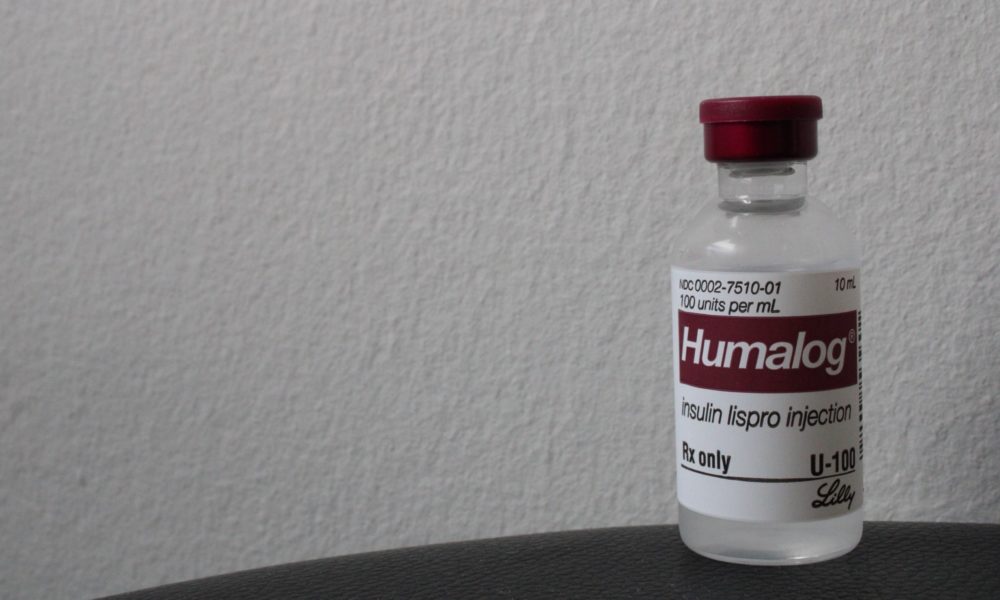For me, it always starts out with dry lips. Then my throat begins to burn with thirst, and my eyes become blurred and dry. The fatigue hits me like an absolute freight train and, after 15 long years of being type 1 diabetic, I realize very quickly: my blood sugar is high.
I have the privilege of being able to dose myself with insulin and know that I will have enough insulin to last me for the next time I need it, and the time after that.
Most type 1 diabetics don’t enjoy that luxury, however. They can’t enjoy that luxury because the American health care system has failed every single person in this country, but especially those who are dependent on medications to keep them alive.
If I were to not address my high blood sugar the moment I feel the skin on my lips tightening and the yearning call of thirst begging for a sip of water, I’d begin to feel the devastating pain of Diabetic Ketoacidosis.
Diabetic Ketoacidosis can set in within three hours or less of not receiving insulin. Without the ability to process fats properly, the liver begins to produce a replacement called ketones to keep major organs functioning, which then causes the blood to become acidic and highly toxic.
For trendy people on TikTok, a keto diet is a fun way to lose weight. Bell peppers and a pound of cream cheese with a sprinkle of Everything But The Bagel Seasoning absolutely seems like a totally normal lunch. Ketones in the urine are a sign to those living the keto lifestyle that they are burning fat.
In a diabetic, ketones in the urine are the first nail in the coffin.
If immediate medical attention is not received, the body then begins to slowly but surely shut down. Although timelines vary between sources, Medline Plus maintains that without insulin, the inevitable result is death.
In 2018, the American Diabetes Foundation found that the average cost of insulin had increased from 15% to 17% between 2012 to 2016. The price of insulin per unit rose from $0.23 to $0.34 during that period, meaning each vial costs roughly $230 to $340. One vial will last a type 1 diabetic on average two weeks, meaning the monthly average cost for diabetics to maintain an adequate insulin supplies can range from $460 to $680. For a full year insulin can cost up to $8,160.
Despite the fact that the insulin that I use today is the same insulin that was created in 1921, its price continues to increase exponentially, tasking many with making life-or-death decisions they shouldn’t have to face because of an auto-immune disorder.
Growing up I was constantly plagued with taunts of being “fat” and “infected,” oftentimes my diet being blamed for my development of type 1 diabetes. By definition, type 1 diabetes is caused by the immune system attacking the insulin-producing beta cells in your pancreas, rendering you unable to produce the hormone yourself. This leads to the body entering a stage of deterioration.
Before the creation of artificial insulin, type 1 diabetes was a death sentence, and those who were diagnosed, often children and young adults, were left to waste away and die in hospital beds. Diabetic Ketoacidosis would set in, and patients would become extremely malnourished. Their bodies would eat away at fat stored within muscles and organs before their brains and hearts would shut down.
Although there is now artificial insulin to save type 1 diabetics from this terrible fate, the erroneous cost of the drug has forced many to face the same horrors that patients faced a century ago.
In 2019, GoodRx estimated that all 23 brands of insulin had the average cost of 35 cents per unit, or about $350 per vial. In total, there are three types of insulin: short and intermediate acting, rapid acting and long acting. Depending on delivery method, a type 1 diabetic on average can use anywhere between one of these formulations to all three.
I currently use an insulin pump that delivers the medication to me 24/7, much like a pancreas delivers small doses in a functioning body. Whenever I consume carbohydrates or my blood sugar is high, using the insulin pump I dose a set amount based upon a sliding scale designed to mimic what my body would naturally do.
Some days I take 50 units of insulin, other days I take over 100.
The cost of my current insulin pump is a whole other story that I won’t get into now, however, it should be noted that the equipment, which helps make living with this disease more palatable, can cost anywhere between $5,000 to $10,000 on average.
Without an insulin pump, type 1 diabetics must use a long-acting form of insulin, a formula that is slowly absorbed into the body, to mimic the small dosing that comes along with the pump. That means that there are then two insulin costs patients must cover, doubling the price to simply survive.
This crisis is not a new topic and has been written about for years, and yet, nothing has changed. Is the answer to the problem as simple as challenging the government to do better? Maybe not.
Three companies own 90% of the world’s insulin supply. Eli Lilly, Novo Nordisk and Sanofi have monopolized a life-saving medication. Each company separately owns the patents for their “formulas,” despite them being virtually identical. This means they are able to set their own prices and, without government accountability, those prices continue to rise.
Insulin, like most medications, can only be attained with a prescription from a doctor. And for those who don’t have access to adequate health insurance, the lack of accessibility and high prices can be deadly.
Advents like the Affordable Care Act allowed thousands of diabetics to get the coverage they needed to maintain a healthy lifestyle for the first time in their lives. I am currently insured with CalOptima and couldn’t be more grateful.
Most diabetics ration their insulin so they don’t go long periods without it.
I was just 8 years old when I was diagnosed and have rationed my insulin in fear of running out. I’ve skipped meals to conserve insulin, and I’ve been flat out denied insulin at the pharmacy.
Prolonged periods of an absence of insulin can lead to excessive episodes of Diabetic Ketoacidosis, which can lead to kidney failure, blindness and permanent nerve damage—often resulting in limb amputation.
So, I guess the upside is that I won’t necessarily die immediately, but rather a slow and painful death.
The American Journal of Managed Care found that, in 2019, one in four type 1 diabetics had rationed their insulin within the past 12 months.
Insulin, just like oxygen or water, is absolutely required for any human being to live, some just need it from a vial.
It is absolutely disgraceful that, in a country that prides itself on being the best in the world, there are people choosing between keeping a roof over their heads, food on their tables or a pulse in their heart.
The pharmaceutical companies that produce insulin have blood on their hands, the American government has blood on their hands and every politician who has not advocated for equal access to health care has blood on their hands.
The knowledge that if at any point in time I run out of insulin my body will begin to effectively eat itself is one of the most terrifying pieces of information to ever be logged in my brain, and I would never wish this fact of my life on my worst enemy.
I deserve to be healthy. I deserve to live. I deserve better.




